Consider the following disambiguation result from a user of Automata’s Linguist™.
Notice the following:
- conflation is set to “all” in the right most drop-down list on the toolbar
- rendering of elided arguments is suppressed since the “…” item on the toolbar is not toggled on
- the pronoun “them” is specified as referencing “mammals” rather than “their young”
- “to maturity” complements the conjunction of nurse and nurture
- which is fine if that is the intent, but we assume it should complement only “nurture”
- the existential symbol before a unary predicate for “maturity”
- where a binary predicate for maturity having an “of” argument may be desirable
- where that second argument would be specified as referencing “their young”
- two rendering problems given that all conflation is enabled and ellipsis is not to be rendered
-
- i.e., they should be treated as elided given they are not referenced
- the variable ?e2 should occur a 2nd time (in the “and” literal)
- otherwise the head complemented by the “to” literal is unspecified
- the existential quantifications of variables ?e9 and ?e21 should be suppressed
-
The rendering problems were reported to Automata and addressed as reflected in the concluding screen capture of this document.
To correct what “to maturity” complements, we either disambiguate again (using the appropriate tool item, all of which have tool-tips) or we re-parse the sentence, which results in the following dialog:
As this is the desired syntactic structure, we approve the dialog and continue disambiguation.
The following clauses are automatically selected as a result of our syntactic approval:
There being no further semantic disambiguation to be performed we can change to “detailed” clauses using the appropriate drop-down list on the toolbar or we can proceed to the derivations tab.
The derivations tab will show us what appears to be equivalent semantics.
The detailed clauses allow us to discriminate between these 2 derivations by selecting that “their” is a plural reference:[1]
After which a single derivation survives, as shown below:
The most obvious next steps are to resolve the pronouns, as in:
The next most obvious step is to specify “mammals” as having the outermost scope and being universally quantified. This is done by selecting “outermost” from the drop-down list when clicking on the “within” column in the row for the quantification of “Mammals.” and selecting the universal quantifier from the drop-down list when clicking on the logic column of the same row.
It is probably the case that we want universal quantification over the young rather to assert that for every mammal there exists some young that it nurses and nurtures.
The existential quantification of the situational variables are implicit in the nurse and nurture literals, respectively, but are not rendered for brevity (since they are not co-referenced).
We can select either of the first 2 readings as desirable (the order of the adjacent existential quantifiers has no logical effect) since each existential should be within the scope of both universals.
After Automata addressed the rendering issue, the result is as follows:
[1] the singular sense of “their” can be eliminated from the lexicon entirely if more formal but less robust grammar is expected

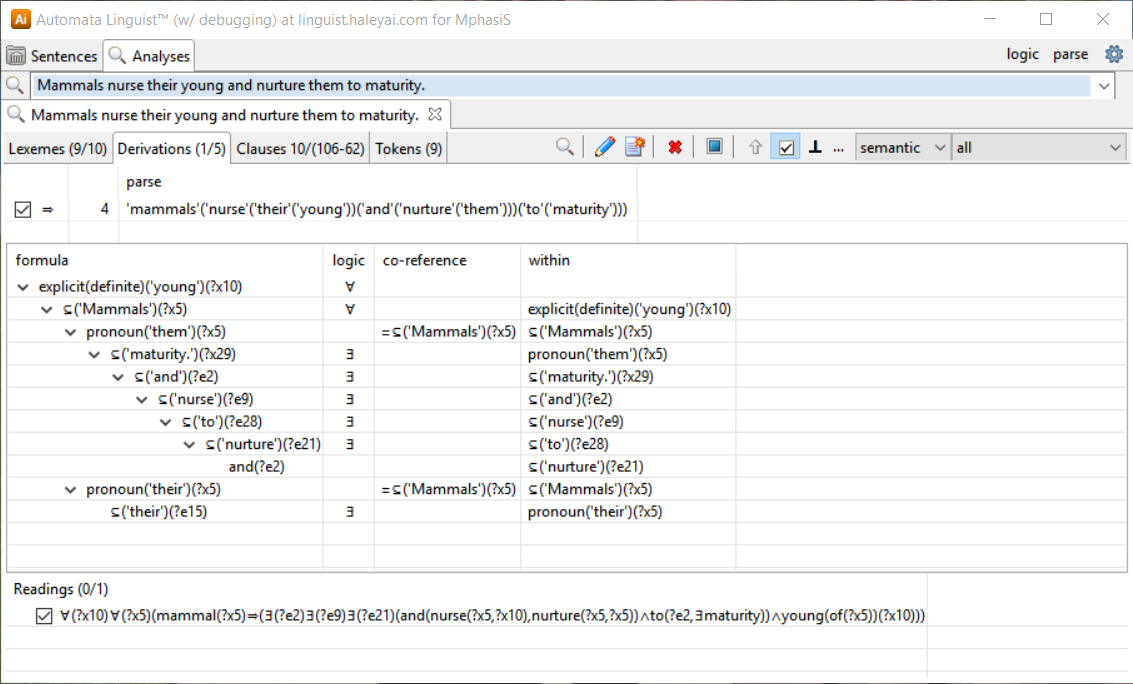
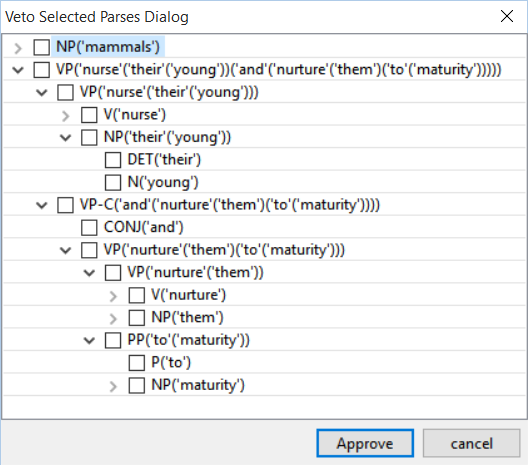

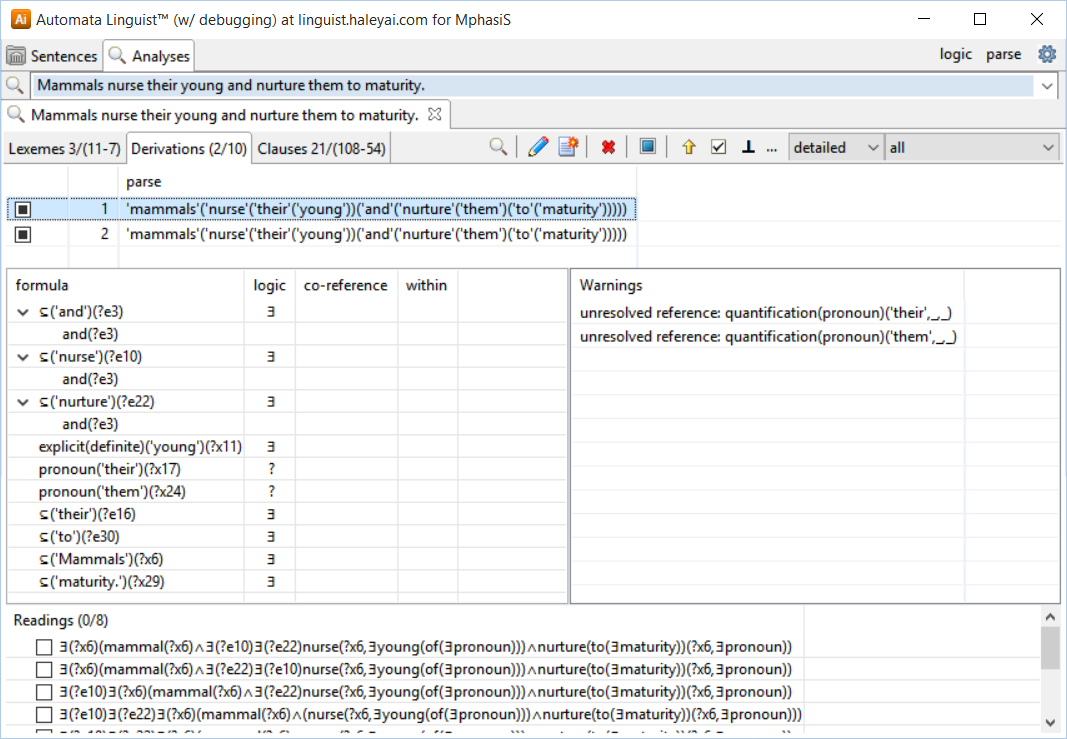
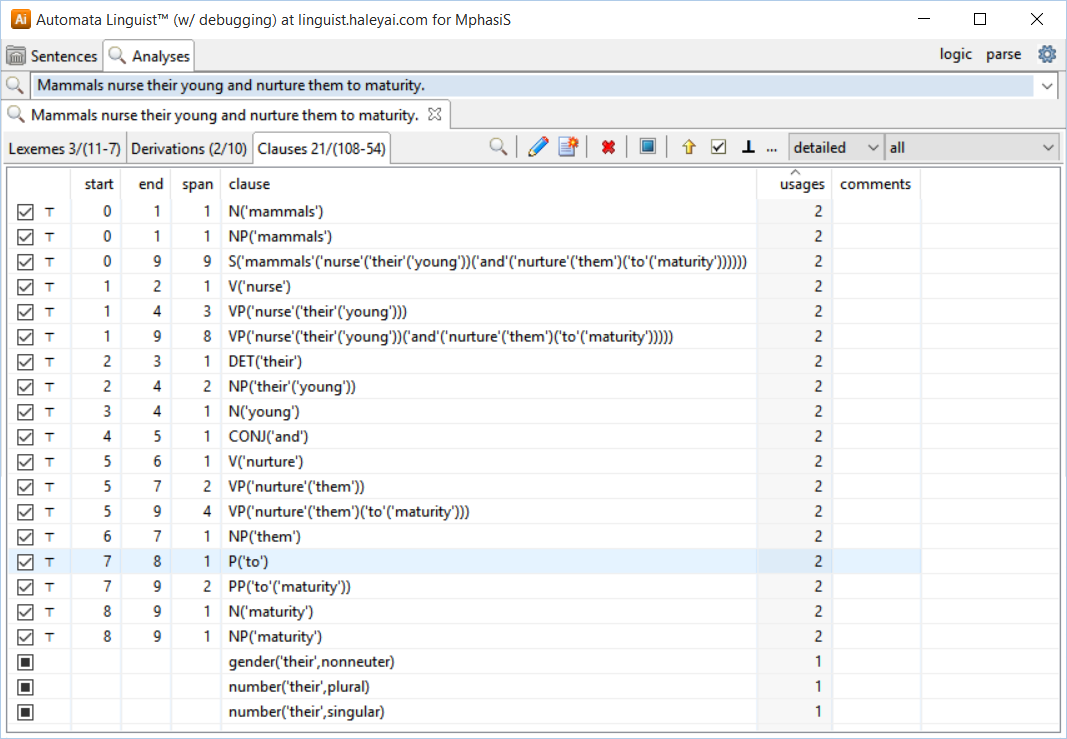

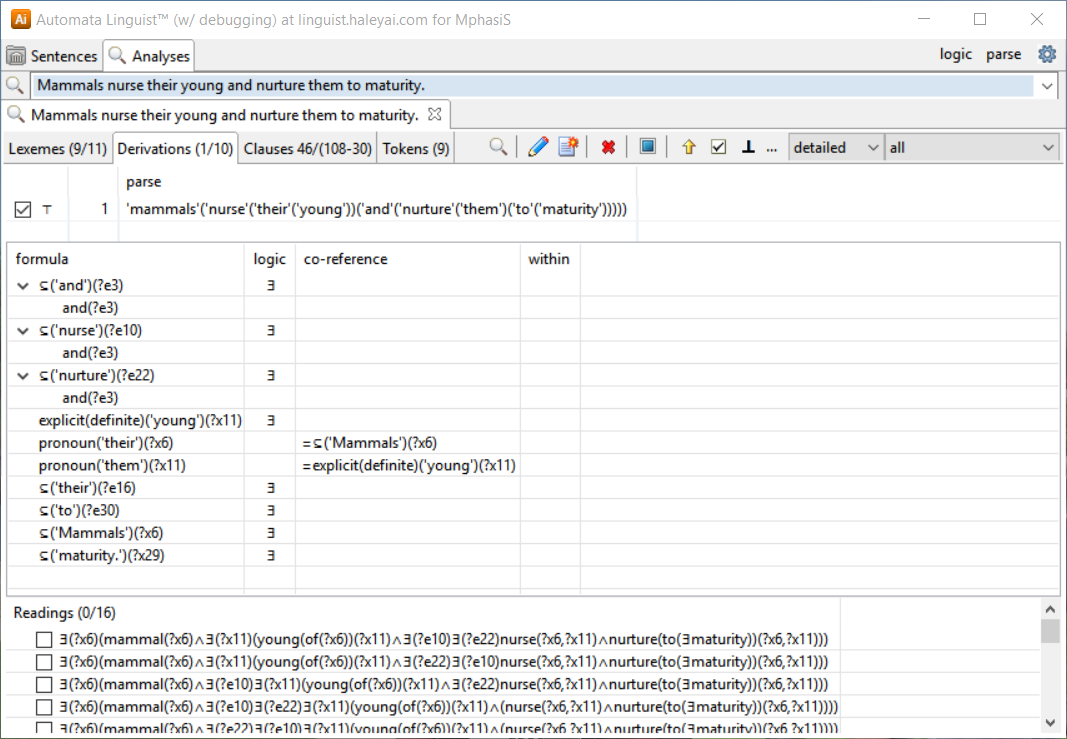
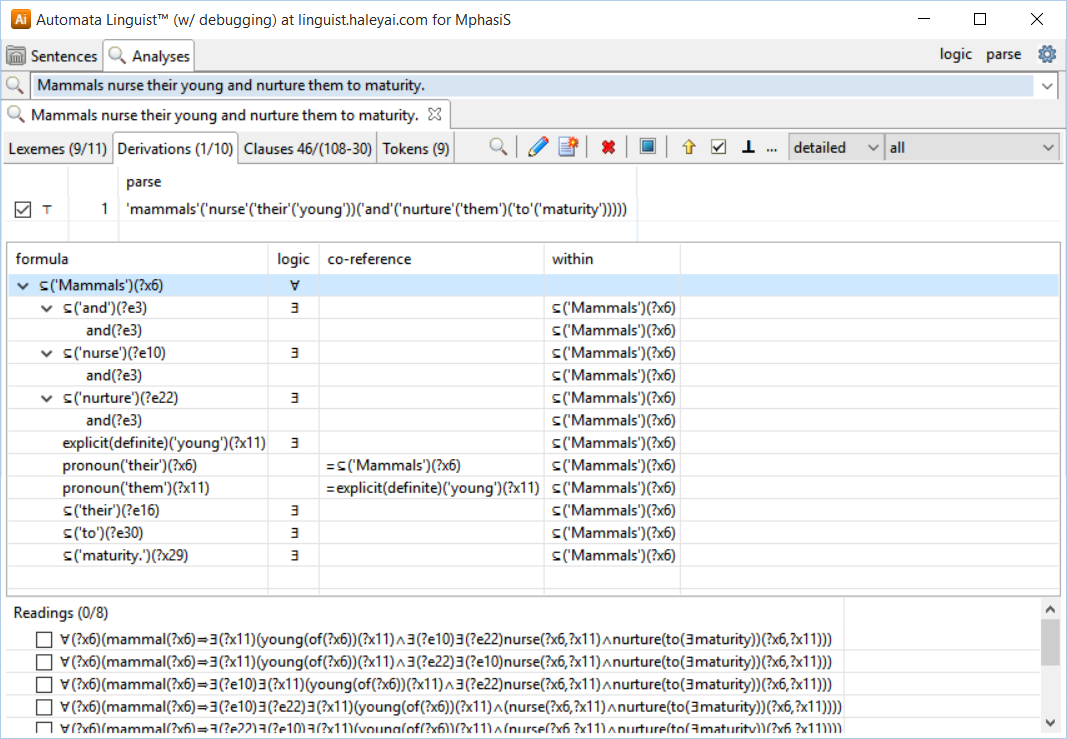


One Reply to “Properly disambiguating a sentence using the Linguist™”
Comments are closed.